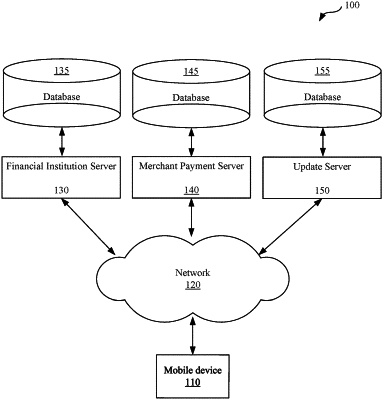| CPC G06Q 20/409 (2013.01) [G06Q 20/326 (2020.05); G06Q 20/3821 (2013.01); G06Q 20/4018 (2013.01)] | 20 Claims |

|
1. A system for managing payment cards, comprising:
a first computer, which is a financial institution computer at a financial institution entity, the financial institution computer comprising a processor, configured to:
receive, from a second computer, which is a merchant payment computer at a merchant payment entity that is other than the financial institution entity, a request to authorize a transaction, wherein the request includes one or more unique identifiers of a first payment card associated with a user and used to perform the transaction;
determine, based on the one or more unique identifiers of the first payment card, that the first payment card is expired and that the transaction is denied;
send, to the second computer, a notification message that indicates that the first payment card is expired and that the transaction is denied;
a third computer, which is an update computer at an update entity that is other than each of the financial institution entity and the merchant payment entity, the update computer comprising a processor and an update database for storing update payment card information, and wherein the third computer is configured to:
receive, from the second computer, an update request that includes the one or more unique identifiers of the first payment card and a unique token associated with the second computer, wherein the second computer sends the update request after the notification message is received by the second computer;
determine that the second computer is authenticated or authorized based on the unique token;
determine, based on the information stored in the update database, whether the update database includes information of an updated second payment card associated with the first payment card;
send, to a mobile device, an alert message of the denied transaction associated with the user;
in response to sending the alert message of the denied transaction,
receive, from the mobile device one or more updated unique identifiers of a second payment card;
send, to the second computer, the one or more updated unique identifiers of the second payment card associated with the user after determining that the second computer is authenticated or authorized;
the first computer being further configured to:
receive, from the second computer, a re-authorization request to re-authorize the transaction, wherein the re-authorization request includes the one or more updated unique identifiers associated with the second payment card sent from the third computer; and
determine, based on the received one or more updated unique identifiers, that the transaction is authorized.
|